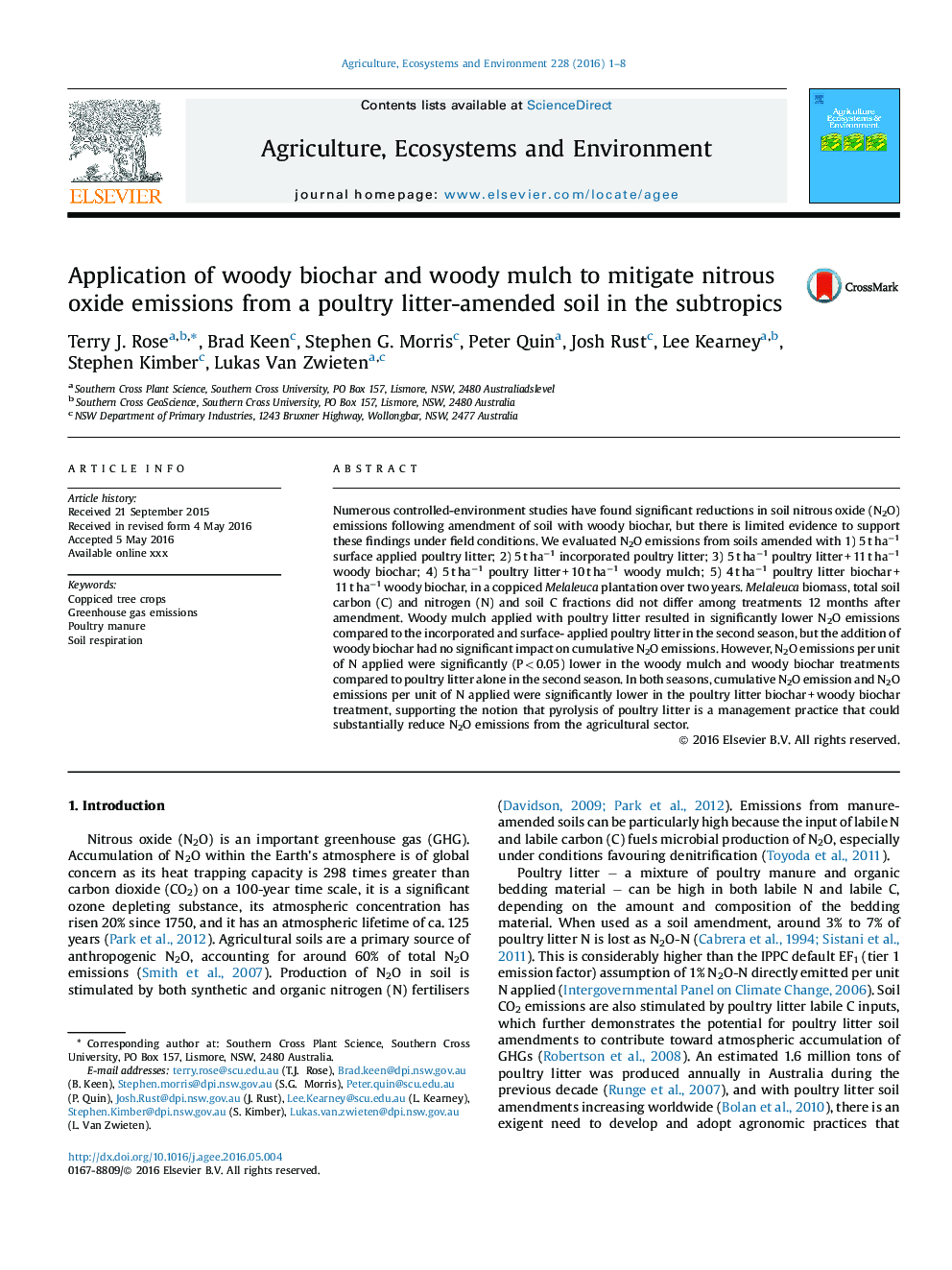| Article ID | Journal | Published Year | Pages | File Type |
|---|---|---|---|---|
| 8487415 | Agriculture, Ecosystems & Environment | 2016 | 8 Pages |
Abstract
Numerous controlled-environment studies have found significant reductions in soil nitrous oxide (N2O) emissions following amendment of soil with woody biochar, but there is limited evidence to support these findings under field conditions. We evaluated N2O emissions from soils amended with 1) 5 t haâ1 surface applied poultry litter; 2) 5 t haâ1 incorporated poultry litter; 3) 5 t haâ1 poultry litter + 11 t haâ1 woody biochar; 4) 5 t haâ1 poultry litter + 10 t haâ1 woody mulch; 5) 4 t haâ1 poultry litter biochar + 11 t haâ1 woody biochar, in a coppiced Melaleuca plantation over two years. Melaleuca biomass, total soil carbon (C) and nitrogen (N) and soil C fractions did not differ among treatments 12 months after amendment. Woody mulch applied with poultry litter resulted in significantly lower N2O emissions compared to the incorporated and surface- applied poultry litter in the second season, but the addition of woody biochar had no significant impact on cumulative N2O emissions. However, N2O emissions per unit of N applied were significantly (P < 0.05) lower in the woody mulch and woody biochar treatments compared to poultry litter alone in the second season. In both seasons, cumulative N2O emission and N2O emissions per unit of N applied were significantly lower in the poultry litter biochar + woody biochar treatment, supporting the notion that pyrolysis of poultry litter is a management practice that could substantially reduce N2O emissions from the agricultural sector.
Related Topics
Life Sciences
Agricultural and Biological Sciences
Agronomy and Crop Science
Authors
Terry J. Rose, Brad Keen, Stephen G. Morris, Peter Quin, Josh Rust, Lee Kearney, Stephen Kimber, Lukas Van Zwieten,
